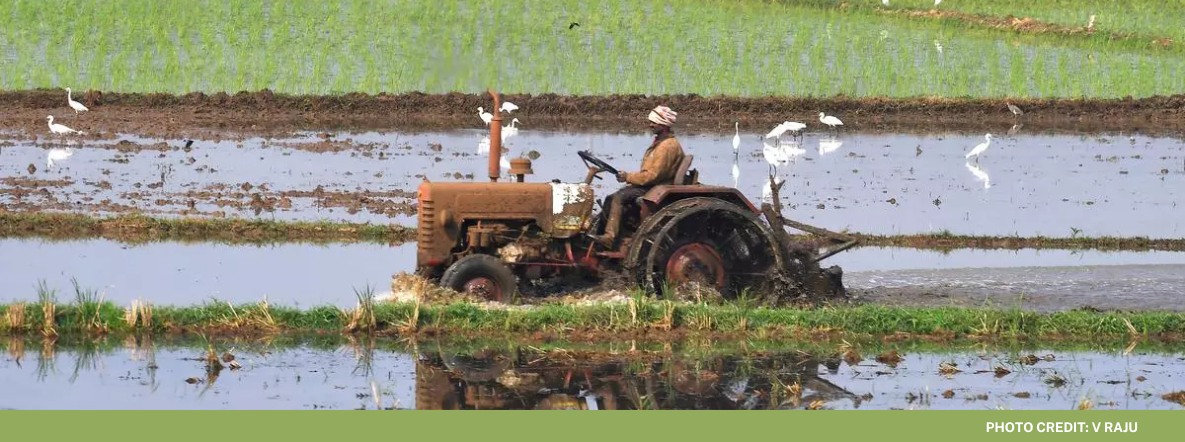Quality data on farmers’ use of machinery lacking
29 Mar 2023
Opinion: Bornali Bhandari, Laxmi Joshi, Ajaya K Sahu and Shish Pal Bansal.
Though the government has been running a Sub-Mission on Agricultural Mechanisation since 2014, a comprehensive database of farmers’ usage of farm machinery isn’t available.
Ownership of power farm equipment in India is low. The recently released NCAER White Paper on ‘Making India a Global Power House in the Farm Machinery Industry’ suggests that there are both demand and supply challenges in this industry. A key challenge is data quality.
On the demand side, for any robust analysis, there’s a need to know: how many farmers are using machinery; what types of machinery they are using; do they own the machinery or are they renting it — and if renting, how much are they paying for it; and what impact the machinery has on agricultural productivity. Also, there’s a need to know if farmers have turned into entrepreneurs by leasing equipment, what kind of equipment they are leasing and whether they are making prohts.
Ownership data are available from the All-India Debt and Investment Survey (AIDIS) published by the Ministry of Statistics and Programme Implementation (MoSPI). The AIDIS Survey 2019 probed farmer households about: (a) ownership of tractors; (b) power tillers/power-driven ploughs; (c) crop harvesters (tractor power-driven)/self-powered combine harvesters; (d) threshers, other power-driven machinery and equipment; and (e) laser land leveller.
It found that, as on June 2018, only 4.4 per cent of agricultural households owned tractors. And cultivator households that owned any one of the non-tractor farm equipment(options b, c, d and e) was 5.3 per cent.
As for rental data, they are taken from ‘Land and Livestock Holding of Households and Situation Assessment of Agricultural Households’, published by the MoSPI. It was found that 63.5 per cent of agricultural households were spending on hiring machinery and equipment for crop production as on June 2018.
Though the government has been running a Sub- Mission on Agricultural Mechanisation (SMAM) since 2014, a comprehensive database of farmers’ usage of farm machinery isn’t available. Also, there are newer types of farm equipment available — planters, seeders, transplanters, fertiliser distributors, manure spreaders, seed cum fertiliser drills, etc — than are being probed in the surveys. The world has moved away to crop-specihc, operation-specihc and region-specihc farm machinery, which are not captured by the surveys.
On the supply-side, since there is no dedicated National Industrial Classihcation code for the industry, the 7- digit product classihcation codes from the Annual Survey of Industries was used, with the relevant codes clubbed together to form the industry. The same is not available for Unincorporated Enterprises covered in the Enterprise Survey.
Size of the sector
One has to use approximations to estimate the size of the sector, including both organised and unorganised. The farm machinery sector is 0.6 per cent of the overall manufacturing sector and tractors form 70 per cent of that share. The challenge of mapping National Industrial Classihcation (NIC) to Harmonised Commodity Description and Coding System (HS) codes remains.
Sometimes the same HS code can be used for two products — for instance, 84328020 is used for both power and rotary tiller. While functionally they both are the same, the former is powered by an engine and the latter can be mounted on a tractor or a power tiller.
Further, the NIC & HS codes need to be updated to re ect the latest farm machineries. Also, estimating demand, domestic supply (from ASI product codes) and external supply (imports) was attempted, but we could not “match” the demand-supply because the disaggregated codes simply did not match. The matching exercise could be done only broadly.
The data quality on both the demand and supply sides needs to improve.
Bhandari is Professor, Joshi is Fellow, and Sahu is Associate Fellow, at NCAER. Bansal was an external consultant to the research project. Views are personal
Published in: The Hindu Business Line, 29 Mar 2023






